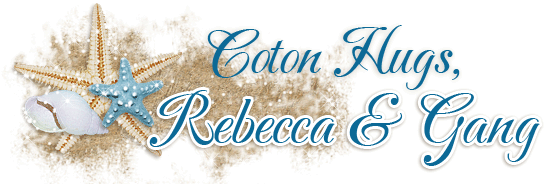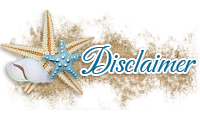Puppy socialization is a means of introducing the world to your puppy and making him comfortable in it. Everything is brand new and so many experiences will be overwhelming. Puppy socialization works best when it’s accomplished in steps.
When you first bring your new puppy home, let your puppy smell and explore every room of your home. Introduce him to other family members and pets. Puppies tire pretty quickly, so many short adventures are better than one long trip around the house. You will know your puppy is comfortable by the way he enters a room. It’s working if his head is held high when he enters a room and he looks curious rather than afraid. Indoor puppy socialization may take several days. Try to just let him settle in around the house with out too many changes all at once.
Now it’s time to take your puppy socialization outside. Start with your yard. Dogs find new shapes scary, so a swing set or a tree can be cause your puppy show a little fear. Let your puppy explore on his own at first. If you notice certain spots he is avoiding repeatedly, pick him up and carry him over to them.
Try not to coddle your puppy if new objects scare him. Smile and act confident, as if nothing is wrong. Telling him he’s a “good dog” while showering him with attention will imprint the idea that acting timid earns praise. Try putting a treat next to the offending object and urge your puppy to approach it.
Introduce him to people of every age, size and height in his first few weeks. Give your friends treats( not too many as this can upset a young puppies belly) to offer the puppy. Once he approaches them and accepts the treat they can reward him with pats and positive reinforcement.
You may be nervous to let your puppy walk in public before he is vaccinated. Puppies can go outside before receiving shots as long as you avoid places where other dogs do their “business.” or places like dog parks, stores etc. I suggest being very careful and to carry your puppy with you during public puppy socialization until he has received his full set of puppy shots. Most puppy classes will not admit dogs until they have finished the puppy series of vaccinations first. This is a good thing. Puppies with out their shots are vulnerable to many deadly diseases. This does not mean that you cannot take your new puppy to your moms, brothers , friends house. Just make sure in this type of situation that your friends dogs are current on all of their shots. Its really important to be careful, but its also really important in these early weeks for your new puppy to continue being socialized. Short trips in the car, to the drive up, relatives homes and things like this are really good.
Have strangers offer him treats, let him smell other vaccinated dogs and, most importantly, let your puppy hear the sounds of your town or city.
The most important thing to remember is not to force puppy socialization. Let him come to people and objects. If he indicates that he is tired or frustrated, let him do something else. You’ll get there, just don’t rush it.
Feeding your Coton de Tulear- learn to know what is in the food you are feeding
What's in Your Dog's Food?
Information excerpted from Dog Food Logic by Linda P. Case, M.S.
The ingredients that make up a dog food are (and should be) of great concern to dog owners and pet professionals. A food's ingredients have the job of providing all of the essential nutrients and energy (calories) to the dog who consumes the food, as well as contributing to the food's flavor, texture and appeal. As a result, when dog owners are selecting and comparing dog foods, the first place that they typically look is the label's ingredient list. We naturally expect this list to tell us what we need to know. Unfortunately, while the Federal Food, Drug and Cosmetic Act requires that pet food labels (like human food labels) are truthfully labeled and must include all of the food sources present in the product, current FDA and AAFCO labeling requirements fall far short of what is needed to allow informed and well considered choices by consumers.
It is not the purpose of this book to provide yet another list of AAFCO ingredient definitions or to describe the differences between various pet food ingredients. Rather, since the purpose of this book and this chapter in particular is to provide dog owners and professionals with the skills and knowledge that will support smart decisions, let's start with identifying what exactly you can know about the ingredients in a food, what you can find out with a bit of sleuthing, and what unfortunately you will never, ever be privy to (if the pet food industry continues its current practices). Let's begin with ingredient information that is readily available to all consumers.
The 3% rule has to do with a seemingly simple and innocent-sounding word: "with." If a pet food label contains that word in its product name, the product is required to have only 3% of the ingredient in the formulation at the time of processing. If you measure out 100 pieces of kibble from a food labeled "with salmon" and then remove three pieces of kibble from the pile, those three pieces are equivalent to the amount of salmon that is found in that pile of kibble. Not much. Yet consumers are expected to know, understand and differentiate between the 95% Salmon Food, the 25% Salmon Dinner, and the 3% Adult Dinner with Salmon foods. This rule is by design imprecise (from 95% down to 25% for food versus dinner, really?) and in practice misleads (and possibly even deceives) consumers. If you wish to feed a salmon (or chicken or turkey or venison) based food, look for one of AAFCO's qualifying terms (dinner, recipe, formula) and avoid brands with the term "with".
Need help choosing a food for your dog? Want assistance wading through the ads, labels, hype and information bombarding you every day? Learn what matters most by reading Dog Food Logic. Buy it today from Whole Dog Journal by following the link below!
https://secure.whole-dog-journal.com/subscribe/main.html?s=FB_totw072214#books





